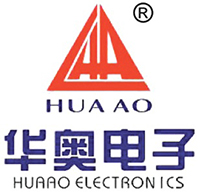Auto Voltage ASIC |
TLE42794 Low-dropout fixed voltage regulator IC
LD42794 IC (analog TLE42794) is designed to create 5 V constant voltage with the dropout voltage of the not more than 0.5 V when the load current is 100 mА and is used in power supplies of electronic equipment. The IC has an internal limit of the maximum load current with over temperature shut- down. The IC is designed for use in automotive applications.
MC33092A Alternator Voltage Regulator IC
The LD3092A (analog MC33092A) is specifically designed for voltage regulation and Load Response Control (LRC) of diode rectified alternator charging systems, as commonly found in automotive applications. The LD3092A provides load response control of the alternator output current to eliminate engine speed hunting and vibration due to sudden electrical loads which cause abrupt torque loading of the engine at low RPM. Two load response rates are selectable using Pin 11. The timing of the response rates is dependent on the oscillator frequency.
LD4263 Automotive 5V Low Drop Voltage Regulator IC
LD4263 is a 5-V low drop voltage regulator. The maximum input voltage is 45 V. The maximum output current is more than 200 mA. The IC is short-circuit proof and incorporates temperature protection which turns off the IC at over temperature.
TLE4275 5V Low Drop Voltage Regulator IC
The LD4275 is a monolithic integrated low-drop voltage regulator in a 5 pin TO-package. An input voltage up to 45 V is regulated to VQ,nom = 5.0 V. The IC is able to drive loads up to 450 mA and is short-circuit proof. At over temperature the LD4275 is turned off by the incorporated temperature protection. A reset signal is generated for an output voltage VQ,rt of typ. 4.65 V. The delay time can be programmed by the.external delay capacitor.
VN1160 LD1150 Motorcycle flasher ASIC
The LD1150 is a dedicated chip for flash controllers for battery motorcycle. Only a 47uF capacitor is required to form a complete flash controller circuit, which greatly reduces the cost of the solution, improves production efficiency, reduces product failure rate, and improves product quality.
|
|


